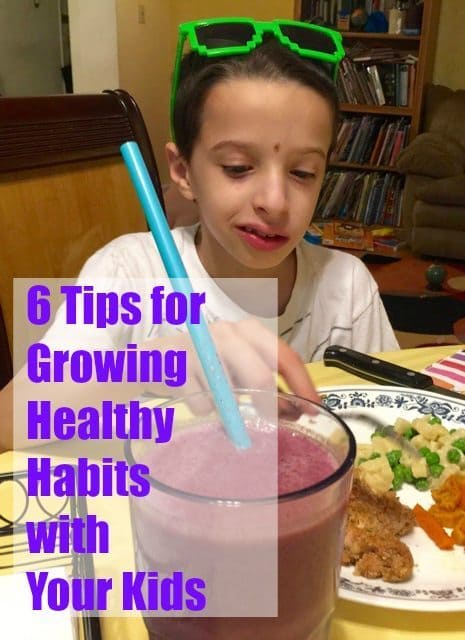A new season of the PBS KIDS Emmy-winning series CYBERCHASE just premiered on PBS stations across the country! Season 10 takes kids on educational adventures involving math, health, and the environment – from encouraging kids to be active and eat well, to teaching kids about reducing waste and growing gardens, all while caring for the health of their community.
 To extend the season’s health theme in communities, THIRTEEN partnered with ChildObesity180 at Tufts University Friedman School of Nutrition Science and Policy to develop CYBERCHASE: STEP IT UP, a program that inspires kids and educators to find opportunities to work more steps into their regular day while learning related concepts in math. Across the country, approximately 6,000 children will participate in the program, pursuing a collective goal of adding 30 million extra steps.
To extend the season’s health theme in communities, THIRTEEN partnered with ChildObesity180 at Tufts University Friedman School of Nutrition Science and Policy to develop CYBERCHASE: STEP IT UP, a program that inspires kids and educators to find opportunities to work more steps into their regular day while learning related concepts in math. Across the country, approximately 6,000 children will participate in the program, pursuing a collective goal of adding 30 million extra steps.

New digital content from CYBERCHASE is on the way too. For teachers, CYBERCHASE will make lesson plans, video clips and theCYBERCHASE: STEP IT UP program guide available for free download through PBS LearningMedia, PBS’ digital media service for K-12 classrooms. Tips and activities for families will be available on PBS Parents. This spring, a new original web series and game will debut.
Season 10 CYBERCHASE premieres include:
“Fit To Be Heroes” – Monday, November 9th
The CyberSquad and their new friend Scanner embark on a quest to build a new Encryptor Chip for Motherboard and cure her virus. With Hacker in hot pursuit, the kids must run, ski, canoe and climb their way to the end of the mission.
Topics: Being Active; Data Representation/Tables
“A Recipe for Chaos” – Tuesday, November 10th
The CyberSquad discovers a popular new restaurant in Castleblanca is serving unhealthy food and Hacker is behind it all. To get Hacker to stop making his unhealthy food, Digit challenges him to a cook-off.
Topics: Healthy Meals; Data Representation/Pie Charts
“A Seedy Business” – Wednesday, November 11th
The citizens of Factoria are back to work but the benefactor of the toy factory is none other than Hacker, and he serves the employees unhealthy meals from vending machines. To get the Factorians out of Hacker’s clutches, the CyberSquad must show them how to grow their own food.
Topics: Seed to Table; Area
“Parks and Recreation” – Thursday, November 12th
Kids in glamorous Gollywood have no safe place to play. They discover an empty lot that can be converted to a park, but Hacker wants the lot for his new Gollywood Tower. When the CyberSquad learns Hacker is planning to use the tower to corrupt Motherboard’s hard drive, they go up against him at a city council hearing.
Topics: Built Environments; Data Collection and Representation/Surveys, Tally Marks
“Bottled Up” – Friday, November 13th
Radsters are an active bunch, but they have a big problem: water bottles. Way Cool Arena has been turned into a bottle dump, and the beloved skate park is next! The kids and Slider must find a way to get rid of the heaps of empties and reduce future waste while making sure Radsters stay healthy.
Topics: Water; Sampling, Multiplication
CYBERCHASE airs Monday-Friday at 4:30PM and Sundays at 11AM on THIRTEEN in New York. Parents can check listings for their local PBS station for broadcast times in their area and can also stream episodes for free anytime on the Cyberchase website or thePBS KIDS Video app.
CYBERCHASE is produced by THIRTEEN Productions LLC for WNET. Executive producers are Sandra Sheppard, THIRTEEN’s Director of Children’s & Educational Media, and Ellen Doherty. Producer is Kristin DiQuollo. Funding for CYBERCHASE is provided by The JPB Foundation and Ernst & Young LLP. Additional funding is provided by the Tiger Baron Foundation.
Eating healthy meals and being active every day is essential for human health, and how you achieve your goals can have a big impact on the health of the planet. Cyberchase Season 10 Health Advisor Kristie Hubbard has provided 6 tips to teach how grow healthy habits with kids.

6 Tips for Growing Healthy Habits with Your Kids
By Kristie Hubbard, PhD, MPH, RD, Cyberchase Health Advisor
1. Plan ahead and track your progress.
Key strategies for improving eating habits and increasing physical activity are planning ahead and tracking progress. Plan meals and snacks ahead of time and ask for your child’s input. Provide structured choices: Would you like broccoli or salad for your vegetable tonight? Ask your child to create a family dinner and physical activity calendar. Use a chart or graph to keep track of family meals and minutes spent being active toward the goal of at least 60 minutes a day.
2. Make cooking a family event.
Designate at least one day each week to prepare a family meal. Involve your child with the prep work – from meal planning based on the five MyPlate food groups all the way through clean-up. Spend some quality time with your child while teaching her about healthy eating. Depending on your child’s skill level, try these fun and child-friendly tasks:
- Creating the menu based on MyPlate
- Searching for recipes
- Writing the shopping list
- Cleaning fruits and vegetables
- Measuring and adding ingredients
3. Rethink your drink.
Sugar-sweetened drinks are the top source of added sugar in children’s diets. Encourage your child to drink water instead of sugary drinks when she’s thirsty. Ask your child to guess how many teaspoons of sugar are in her favorite drinks. To build math skills, read the nutrition facts panel and help your child calculate how many teaspoons of sugar are in one serving of her favorite beverage, using the 4 grams of sugar = 1 teaspoon conversion.
4. Chores count!
Chores to do? Involve your child in active chores around the house and make it fun. Indoor chores like sweeping, mopping, and vacuuming can also get your child’s heart pumping. Make it upbeat by cleaning the house to your child’s favorite music playlist. Be sure to count these activities toward your child’s goal of at least 60 minutes each day!
5. Hit the “off” button.
Hitting the “off” button on almost any electronic device is a surefire way for finding more family time for physical activity. Dance indoors, play catch outside, or do yoga after dinner. If your child doesn’t want to miss her favorite show, get up and moving while you watch! Have a contest and count how many jumping jacks she can do during the opening credits, a song or another scene.
6. Be a food detective.
A healthy meal starts with more vegetables and fruits and smaller portions of protein, grains, and dairy. Create an individualized meal plan for your child based on her age and activity level at choosemyplate.gov. Ask your child to estimate how many ounces of liquid fit in your glasses at home and how many cups of cereal fit in your bowls. If your usual dishes are leading to portion distortion, switch to smaller glasses, bowls and plates to help with portion control.




Leave a Reply